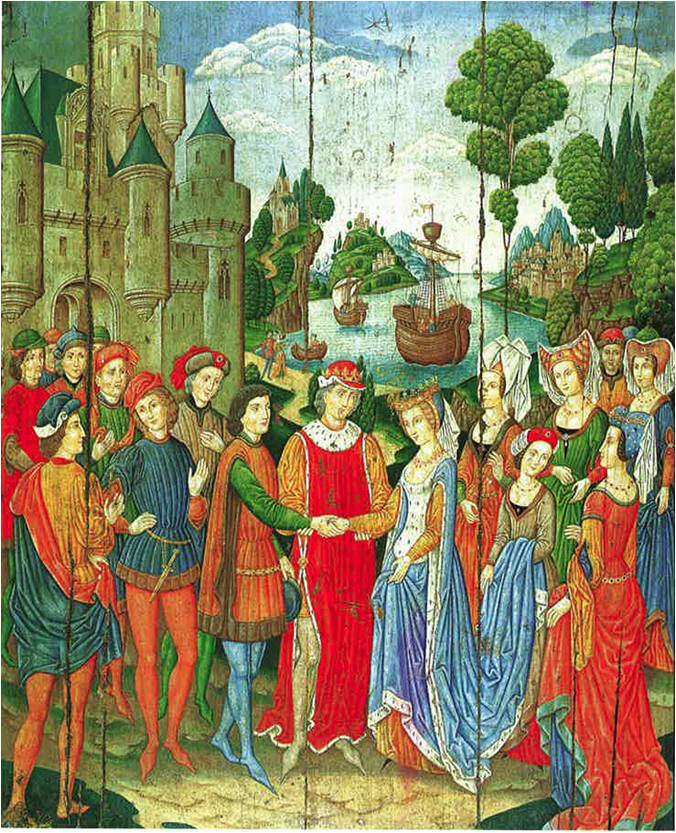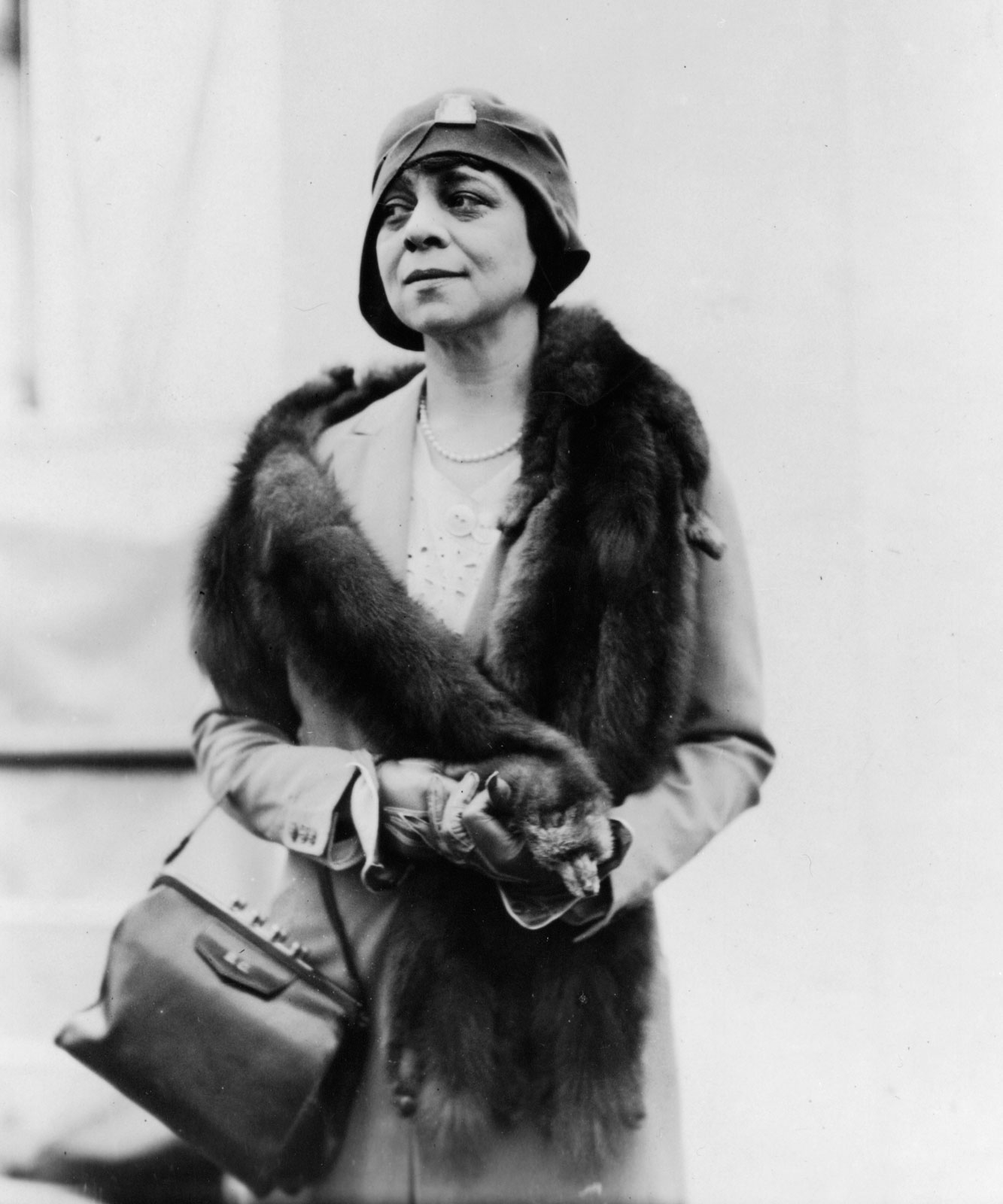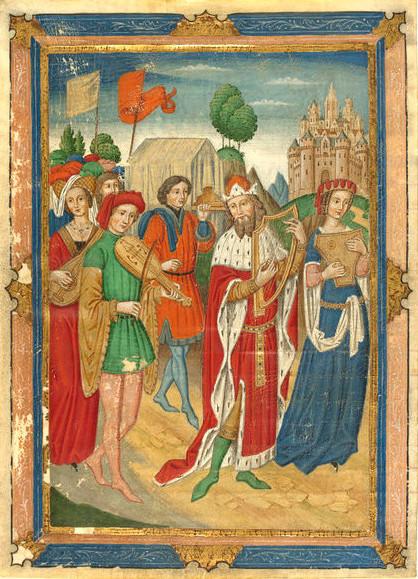The Morgan Library & Museum, New York. By Paolatrabanco [CC BY-SA 4.0]
In the 19th century, a forger of medieval art created works that today are more valuable unmasked than they would be if they were still thought to be originals. Medieval culture scholar Mary Wellesley takes us through the detective-like story of the woman who uncovered his deception.
In 1930, the chief librarian of the Pierpont Morgan Library in New York, Belle da Costa Greene, was approached about a rare medieval panel painting by the Spanish master Jorge Inglés. The painting was to be offered to the Metropolitan Museum of Art’s board of trustees by its purchasing agent, Count Umberto Gnoli. The count hoped Greene would endorse the painting, which shows the betrothal of Saint Ursula, and recommend that the board acquire it. However, the painting appeared suspect to Greene; there was something riotously decorative about it.
It’s a busy scene: in the foreground a semicircle of figures are arranged in brightly coloured and elaborate clothing, many holding theatrical poses of coyly cocked heads, extended feet, and lifted heels. In the centre stands Saint Ursula — one tiny, sharp-toed slipper poking out beneath an expanse of ermine and deep-folding blue fabric. Out of her ermine bodice, an equally expansive bosom spills. In the background, lollipop trees with spindly trunks and flat foliage grow up around quaint little castles perched on the edge of an unconvincingly mobile, blue lake. For a medieval painting, something looked off to Greene. The panel bore the marks of age — several long, vertical cracks punctured its surface. But one of them, which might have sliced through a central figure, mysteriously stopped short, halfway down the panel. The Betrothal of Saint Ursula was a too-perfect version of the imperfections of the medieval.

What Greene had detected was the work of one of the most audacious and skilful forgers in the history of medieval art. She named the trickster the “Spanish Forger” because the piece was the supposed work of Jorge Inglés. Greene was the first scholar to collect and analyse the Forger’s works. Nine years after her initial identification, she compiled a list of his known forgeries. It was fourteen items long. At the most recent estimate, however, his works are now thought to number around 350 images, the majority of which are manuscript forgeries.
As she began to unravel the web of the Spanish Forger, Belle da Costa Greene was pulling off a successful masquerade of her own. Greene was in fact born Belle Greener, daughter of African American parents of mixed heritage. Her father was Theodore Greener — the first African American graduate of Harvard. At some point in her early adulthood, Belle changed her name from “Greener” to “da Costa Greene,” and invented a Portuguese grandmother to explain her dark complexion. It was the beginning of her new life as a white person. She trained as a teacher and then a librarian, getting a job at Princeton University Library. It’s a testament to Greene’s courage that she achieved this: in the 1930s an alumnus of Princeton wrote from his home in Missouri to the college’s president, enthusiastically telling him that “one of the reasons Princeton is so popular here is that it is the one Eastern school that does not enroll negroes.”

While she was working at Princeton, she met student Junius Spencer Morgan II, who introduced her to his uncle, John Pierpont Morgan, more commonly known as J.P. Morgan. Morgan hired Greene in 1905 to be his chief librarian, and she would hold this job for 43 years, later becoming director of the Morgan Library. In 1921, the Chicago Daily Tribune ran a profile of Greene, in which it said: “she wears her hair long and does not wear glasses, runs to Europe on secret missions and is the terror of Continental collector’s agents.”
To this day little is known about the Spanish Forger, who is still known by the name Greene gave him. He was likely not Spanish but French, living and working in Paris at the end of the nineteenth and the start of the twentieth century. At this time, Paris was the cradle of modernism and fauvism, and yet somewhere in the same city, a determined painter realised that a saccharine vision of a frozen Middle Ages would reach a receptive bourgeois market. While the avant-garde embraced so-called primitivism as a way to explode the boundaries of accepted art, the Forger’s artificial archaism exploited the bourgeois art collector’s nostalgia for tradition.
The Spanish Forger presents us with a view of how the nineteenth century conceived of the Middle Ages — an era of chivalry and courtly love, rather than a time of sober Christian faith and high mortality rates. Although he painted many religious scenes, the majority of what the Forger made was secular — jousts, feasts, hunts, gardens and musical recitals. Leafing through the catalogue of the Forger’s works, his personal sensibilities and cultural biases are immediately apparent: every nobleman is outfitted with a hawk about to take flight; every noblewoman is encumbered by pneumatic breasts that bulge from over-laced bodices; and dragons and unicorns are as commonplace as dogs and cats.
Despite the idiosyncratic quirks of his work that mark him out today as an obvious fraud, the Spanish Forger was meticulous and skilful. So meticulous that he even fooled Belle da Costa Greene, some twenty years before she would unmask his deception. In 1909, already in her capacity as chief librarian of the Morgan Library, Greene unwittingly acquired an antiphonary — a book of chants used in church services — into which the Forger had added donor portraits. The Morgan Library was far from the only victim. The Spanish Forger made it into the collection of the Metropolitan Museum of Art, and major and minor collections across the world would acquire his work in this period.
The Forger’s method was studied; he based much of his work on the images found in the popular five-volume Art of the Middle Ages and the Renaissance, published in 1847 by Firmin Didot. In an age before photographic reproduction, this book brought the visual treasures of the medieval world to a mass market for the first time. The edition was full of chromolithographs, a process for colour reproduction — invented in the nineteenth century — whereby artists made copies of images on a zinc plate, and then applied chemicals to build up layers of printed colour. The Forger was adept at copying images, modifying, and reversing them — the exact skills required to be a chromolithographer. It’s possible that this was the Forger’s profession for a time, and evidence from the publisher’s archive points toward his being an associate of Firmin Didot.
Still, the Forger was not always historically accurate. He mixed together conventions from Italian, French and Flemish paintings and depicted the fashion of different places and periods in a single image. As for his technique, the Forger was always careful to paint his works on medieval vellum or panel. He most often took medieval liturgical books, cut sections from them, scraped off any text beneath and began work. While he used medieval vellum, a telltale sign of his forgery was that he painted using modern materials and in places he used copper arsenite pigment, known as Paris Green, which was not available before 1814.
Today the Spanish Forger’s works command a high price in the collector’s market, and are more valuable unmasked than they would be as undetected fakes. In 1998, the auction house Christie’s sold an entire forged choir book for nearly $30,000, almost three times its estimated price. In 2009, the Victoria and Albert Museum in London acquired a set of five pieces by the Spanish Forger valued at over $30,000. The Spanish Forger is fooling people no more, but we are still fascinated by his incongruous, early twentieth-century vision of the medieval world.
A version of this article was originally published in Lapham’s Quarterly



Something similar:
by Adam Smith
In December 1955, at the Holt Street Baptist Church, Martin Luther King, Jr., made a speech that he intended, he later said, to “be militant enough to keep my people aroused to positive actions yet moderate enough to keep this ...
Something different:
by Luke Fenton-Glynn
In the cult film Dude, Where’s My Car?, Jesse and Chester wake up in their house, after a night of partying, and are unable to remember where Jesse’s car is. Jesse and Chester have been dating the twins, Wanda and ...